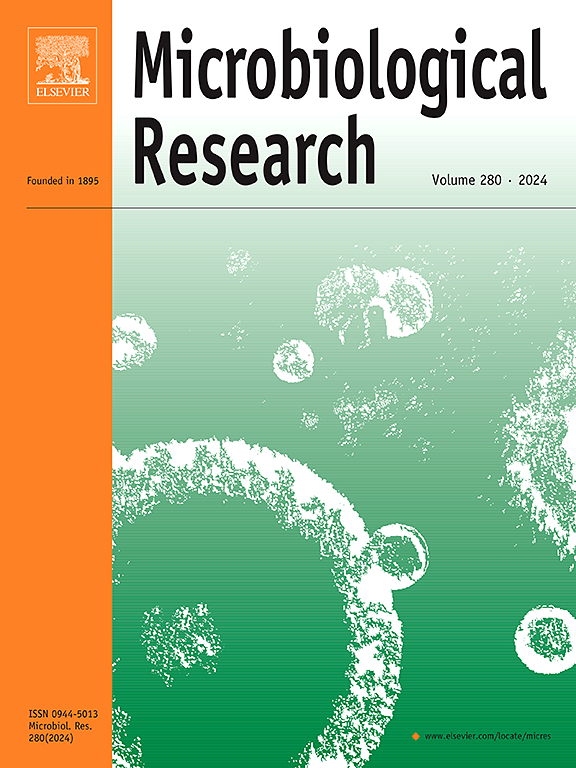葡萄球菌外毒素在眼部感染中的作用,重点是肠毒素
IF 6.9
1区 生物学
Q1 MICROBIOLOGY
引用次数: 0
摘要
金黄色葡萄球菌(金黄色葡萄球菌)是致盲性角膜感染细菌性角膜炎的主要病原体之一。传统的治疗策略严重依赖抗生素。然而,这些药物的过度使用和不明智的使用大大促进了多重耐药菌株的出现。因此,了解毒力因子在疾病中的作用对设计新的治疗方法很重要。本文旨在探讨和总结葡萄球菌毒素,特别是肠毒素(SEs)在眼部感染中的作用。本文综述了SEs与眼部感染的关系,以及它们的基因组定位和调控机制。目前的研究表明,在眼部分离物中检测到SE基因,与非眼部分离物相比,眼部分离物中观察到的特异性SE基因频率更高。此外,在动物角膜炎模型中,几个SE基因已被证实赋予金黄色葡萄球菌细胞毒性和侵袭能力。尽管在这一领域取得了进展,但仍存在重大的知识空白,特别是关于se的具体功能和宿主反应途径。解决这些问题可能有助于制定有效的预防和治疗措施,以防止SEs引起的眼睛损伤。本文章由计算机程序翻译,如有差异,请以英文原文为准。
Staphylococcal exotoxins in ocular infection with focus on enterotoxins
Staphylococcus aureus (S. aureus) is one of principal etiological agents of bacterial keratitis, a blinding corneal infection. Traditional treatment strategies rely heavily on antibiotics. However, the overuse and injudicious use of these agents have significantly contributed to the emergence of multidrug-resistant bacterial strains. Therefore, understanding the role of virulence factors in the disease is important for the design of new therapeutics. This review aims to explore and summarize current research on the role of Staphylococcal toxins, especially enterotoxins (SEs), in ocular infections. The relationship between SEs and ocular infections is reviewed, as are their genomic location and regulatory mechanisms. Current research suggests that SE genes are detected in ocular isolates, with a higher frequency of specific SE genes observed in ocular isolates compared to non-ocular isolates. Additionally, several SE genes have been confirmed to confer cytotoxicity and invasion ability to S. aureus in animal keratitis models. Despite the progress in this area, significant knowledge gaps remain, particularly regarding the specific functions of SEs and the host response pathways. Addressing these questions may contribute to the development of effective preventive and therapeutic measures for eye damage caused by SEs.
求助全文
通过发布文献求助,成功后即可免费获取论文全文。
去求助
来源期刊

Microbiological research
生物-微生物学
CiteScore
10.90
自引率
6.00%
发文量
249
审稿时长
29 days
期刊介绍:
Microbiological Research is devoted to publishing reports on prokaryotic and eukaryotic microorganisms such as yeasts, fungi, bacteria, archaea, and protozoa. Research on interactions between pathogenic microorganisms and their environment or hosts are also covered.
 求助内容:
求助内容: 应助结果提醒方式:
应助结果提醒方式:


